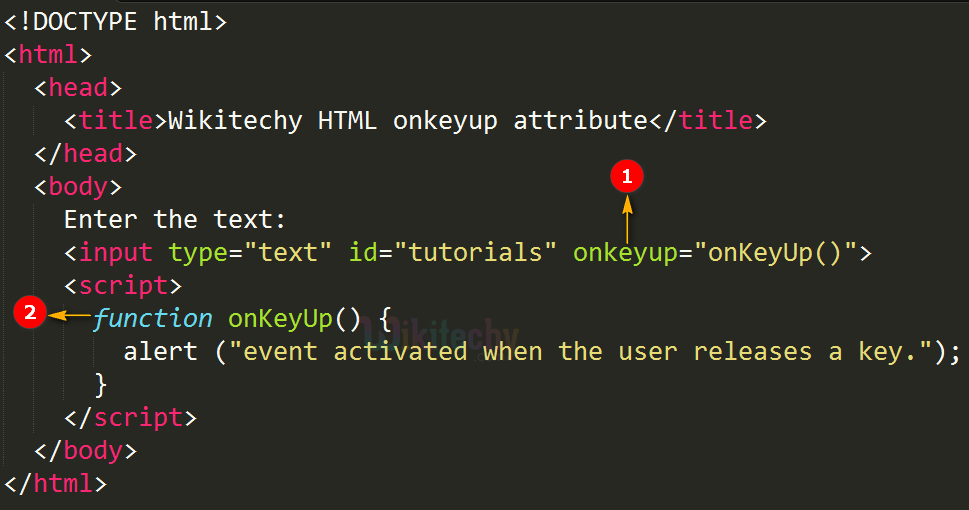


JAVASCRIPT EVENT KEYUP CODE
The enter key is represent by code "13" in ASCII. We are using keypress() event of jQuery to detect which key was pressed. So, below is simple jQuery code to determine or find out which key was pressed. It is recommended to watch event.which for keyboard key input. The event.which property normalizes event.ke圜ode and event.charCode. In fact, in many cases, if the user holds down the key, the keydown event will be triggered continuously. This event doesn't require the user to finish the keypress in order to be triggered. The keydown event is triggered as soon as a user presses a key down. The main keyboard events you need to understand are: It is important to note that, keyboard events may not be fired if the user is using an alternate means of entering text, such as a handwriting system on a tablet or graphics tablet.
When a user presses a key, jQuery determines which event to raise based on whether the keyboard message specifies a character key or a physical key.The event type (keydown, keypress, or keyup) identifies what kind of keyboard activity occurred. All browsers except Firefox also support objects describe a user interaction with the keyboard each event describes a single interaction between the user and a key on the keyboard. The event.clipboardData property gives access to the clipboard. On the other hand, navigator.clipboard is the more recent API, meant for use in any context. To reiterate, event.clipboardData works solely in the context of user-initiated event handlers. Tip: The order of events related to the onkeyup event: onkeydown onkeypress.
() when the key is Enter -> .And even if we manage to dispatch such event, the specification clearly states that such “syntetic” events must not provide access to the clipboard.Įven if someone decides to save event.clipboardData in an event handler, and then access it later – it won’t work. The onkeyup event occurs when the user releases a key (on the keyboard). Inline handlers: Inline JavaScript to be executed when the event is triggered (similar to. It’s forbidden to generate “custom” clipboard events with dispatchEvent in all browsers except Firefox.

So most browsers allow seamless read/write access to the clipboard only in the scope of certain user actions, such as copying/pasting etc. The (blur) event is bound to two JavaScript statements.
JAVASCRIPT EVENT KEYUP HOW TO
A user may switch between various applications, copy/paste different things, and a browser page shouldn’t see all that. This section shows how to bind to the keyup event of an input box to get the users input after. The clipboard is a “global” OS-level thing. More about it in the specification Clipboard API and events, not supported by Firefox. It’s a bit beyond our scope now, but you can find its methods in the DataTransfer specification.Īlso, there’s an additional asynchronous API of accessing the clipboard: navigator.clipboard. So far in this course when we have talked about building our listeners. That’s because clipboardData implements DataTransfer interface, commonly used for drag’n’drop and copy/pasting. How to Access Data From Input Elements with the keyup Event Listener in Vue JS. For instance, we can copy a file in the OS file manager, and paste it. It’s possible to copy/paste not just text, but everything. You can find more details about document selection in the article Selection and Range. So the example above uses document.getSelection() to get the selected text. Example: In the below example when we pass the 'event' as parameter to the function, the keyup event will passed as a parameter and when we pass 'this. The 'Keyup' event will be fired after the 'keydown' and 'keypress' events. If we use event.preventDefault() it won’t be copied at all. We will use Keyup event to execute one or more JavaScript function when a user press a key. This method attaches an html element to event handler function. That’s because technically the data isn’t in the clipboard yet. jQuery keyup() Method triggers the keyup event when any button on the keyboard is released. Please note: inside cut and copy event handlers a call to (.) returns an empty string.


 0 kommentar(er)
0 kommentar(er)
